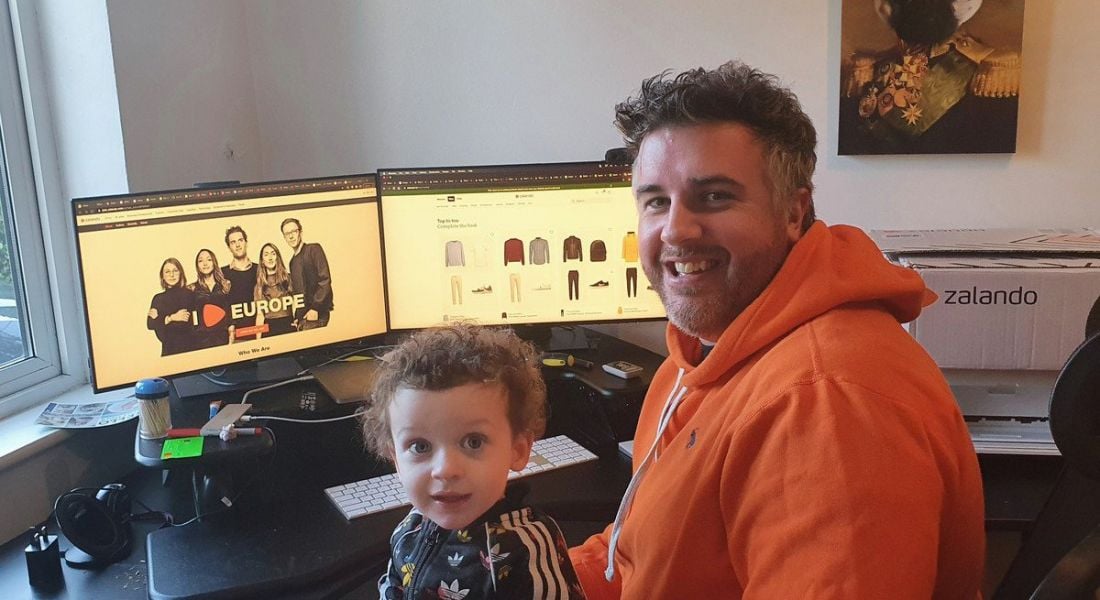Zalando’s Jonathan Keenan, who joined the company remotely at the start of the pandemic, shares his experiences of managing a team he has never met beyond his computer screen.
Just as I was about to begin my new role with Zalando as head of engineering for customer profiles and personalisation, Covid-19 decided to really spread its wings, changing the work landscape forever. So, as it turns out, I’ve never met my team face to face or even visited our office.
While this may sound like a particularly daunting task, I found I settled into the team pretty easily. Luckily, I managed remote teams back in 2016 when I was working for Chelsea Football Club. I had already been through the pain and pitfalls of remote working that we have all become familiar with over the last 12 months. So despite the usual nerves of starting a new job, the unexpected addition of remote work didn’t add much extra unease to the situation.
One thing that made the remote aspect of my new start easier was how friendly and supportive Zalando was. Everyone from my own leadership team and the teams I manage, to people completely outside my department, made me feel like part of the furniture from day one.
The big challenge I had, and one that was new to me despite having managed remote teams before, was carrying out the task that Zalando had actually hired me for; to grow the customer platform team.
Hiring a tech team remotely
Initially, I assumed the process would be hindered by losing one of the more useful parts of face-to-face interviews: body language and non-verbal communication. As it turned out, I had nothing to worry about. Candidates were much more relaxed over video interviews, and they’ve confirmed for me that the intimidating nerves that come along with sitting in the foreign environment of an interview room helped them to perform better overall.
If you have carried out as many interviews as I have, I’m sure you will agree there is nothing better than a candidate who is relaxed. On the other hand, whiteboard-style interviews are much more difficult to facilitate in this new format and, depending on their importance to the overall hiring process, us managers need to think outside the box.
‘Being an emotionally intelligent leader is perhaps more important now than ever’
Our team came up with an idea that has worked well so far; to have a GitHub repository with half-finished code given to the candidate at the start of the interview. Through that project we tease out the same sort of questions we would have traditionally worked through on a whiteboard.
While growing the customer platform in a fully remote format hasn’t been without some minor teething pains, we’ve achieved many milestones as a team that I’m extremely proud of. Yes, we’re missing out on the opportunity to build relationships in the ‘normal way’.
But what does ‘normal’ mean these days, anyway? The most important priority for me as a leader is to create an environment where my team can thrive in spite of the restrictions and changes they’re experiencing – and that means leading with empathy first.
Helping remote teams thrive
Great managers rely heavily on emotional intelligence, particularly drawing on their self-awareness, empathy and social skills. This can be difficult on any given normal day, and even more so in a remote environment without the ability to visually gauge someone’s emotions through non-verbal cues.
Being an emotionally intelligent leader is perhaps more important now than ever. My suggestion is to adapt your style. Don’t rely on the same methods you would use in an office to pick up on the subtleties of your team’s dynamic. Be proactive in reaching out to your team and communicate with them in a more deliberate fashion.
Paying particular attention to a few key areas has worked wonders for me and my team:
1. Overdo communication
Too much is better than not enough, especially at the start, and will reduce the chances of your new teammate feeling isolated. When you’ve built up a good rapport with them, they will freely tell you to stop annoying them as much.
2. Check in regularly
Figuring out inter-team relationships is exceptionally hard to do remotely since the amount of group interactions you can observe has dramatically fallen. Unless you are in possession of some psychic abilities, subtlety goes out the window and, again, the solution can be frequent and consistent check-ins with your team.
Organising regular remote social events can help, but if you are having enough check-ins with your team, patterns will emerge and inter-team relationships will present themselves organically.
3. Strive for clarity
Having a performance conversation when things are not going well is always tough and doing so remotely with someone you may have never met face to face amplifies the situation. Unfortunately, I do not have any advice on how to make it easier in a remote situation except to say to stick to the same principles you would use under any other circumstance.
Be clear, concise and empathetic. While the solution to other remote management situations is to over-communicate, delivering tough feedback is definitely not one of those scenarios.
4. Respect your team’s flow hours
Not being in the office any more, you lose the luxury of clearly seeing if someone is ‘plugged in’. The alternative of sending someone an instant message to see if they are free to chat on a regular basis can quickly become annoying or downright disruptive. Discuss with your team if they would like to have ‘no contact hours’ and if you really need to have that meeting. Try breaking the flow hours as rarely as possible.
5. Use a combination of platforms and formats
Balancing the right choice of communication with your team between group video meetings, individual video chats or instant messages is hard. It’s important to try out all these different options with your entire team for a period of time.
After a while, you will notice that some team members will prefer updates in a one-to-one video chat and others will prefer their updates to come via chat. Yes, this sounds like it could be a lot more work for you, but you have to earn that shiny manager badge somehow!
As more Zalando employees hit their own work anniversaries remotely, I can only imagine we’ll need to continue to adapt our interview and onboarding style even further. So far, though, keeping things as human as possible seems to be the best bet.
Jonathan Keenan is head of engineering for customer profiles and personalisation at Zalando in Dublin. He has a varied background as a software engineer, having previously worked at companies such as Paddy Power and Aviva.




